| Umělec magazine 2006/2 >> Rules of Engagement | List of all editions. | ||||||||||||
|
|||||||||||||
Rules of EngagementUmělec magazine 2006/201.02.2006 Mihnea Mircan | profile | en cs |
|||||||||||||
|
This is an exercise in adjustment, an attempt to make mental room for the legions of ideas and regiments of ghosts that lurk and maneuver inside and outside Philippe Meste’s ‘Spermcube’, to speak of the monster, therefore to propose a representation that anticipates but eludes the ferocious vastness of the cube. A ton of sperm, that will be displayed like a frozen Minimalist cube, and the attending enterprise – composed of artist, donors and shareholders –, that makes neo-liberal sense of Philippe Meste’s ongoing project, is a serious Guinness Book record candidate as far as subversion in contemporary art goes. It uproots instead of just displacing, it exaggerates, confuses things and attacks in all directions. It embodies a Stakhanovism of secrets and secretions, obscenity and retreats, overstatements of violence and overwhelming anonymity. It is truly universal, it convincingly suggests the world or is perhaps the world’s largest synecdoche. It plays between the impossible, the unreasonable and the feasible.
Trying to write about the ‘Spermcube’, the tropes of critical modesty must be deployed, or at least mentioned as a necessity. Will the text, threatened by the hysterical massiveness of the cube, manage to engage the critical mass of the piece or be invalidated by its size and difficulty, reduced to the reiteration of an acte manqué? Will it try to tame the cube, to dispense with the event and find grounds for the figure, contextualizing it until it seems almost unavoidable and essentially unproblematic? What other reactions could Philippe Meste’s project could activate, beside a text that must admit its limitations and potential inadequacy? A shout or perhaps plain numbness: a shout, because the question of voice is invoked by the cube, articulated between the bodily and the political as a manifestation of presence that leaves no traces; stupor, because Meste’s white cube exhausts and nullifies the capacity of counting and measuring. Scale is, to a certain extent, medium and subject of the piece. The cube is seamlessly filled with all the denied possibilities of life – it does not overflow, nor is it half-empty. Container, contained, signifier and signified match each other while engendering the utmost confusion, with the sole certainty being that nothing is lost or in surplus. The quantity, fixed and enormous, is in this sense the absolute opposite of the substance stored and its anomic nature – the physical correspondence between box and contents is built on a disparity that I tend to consider in a radically political sense. The cubic meter of sperm is an exercise in precision that exacerbates measurement: Meste’s calculations produce the mathematical sublime and measurement has here something to do with despair and utopia, rather than exactitude. This cube is bigger than anything else. The ‘Spermcube’ contains all the possibilities of life, all possible figures in distressing agglomeration, one on top of the other, without a background, or with their own interlacing and gesticulation as background, a biopolitically incorrect machine celibataire that generates anonymity, undifferentiated and powerless life. By the politics of use and value it practices, Meste’s enterprise is the absolute opposite of a sperm bank, for the obvious reason that it is not concerned with preserving individuality; instead it lets the jetsam of individuality float on a sea of DNA configurations, their particularity lost and their use value annulled. We could wonder what might be happening to the billion DNA imprints trapped in the box, whether they diverge and carry on as separate entities, mutate into something else or join to produce either the perfect being, a horrid ogre, the Other or the non-descript John Doe. For the first time, Philippe Meste is not resolutely dealing in expenditure and waste, not orchestrating explosions. The projects gathered on his website www.g-a-s-m.org articulate an aesthetics of combat and work like a lexicon of violence and contestation: guns, sex, action and money, shooting, stealing, protesting, ejaculating. With the ‘Spermcube’, Philippe Meste shifts to accumulation and conservation – he acts inside the box and, again for the first time, attempts to make art without being alone. Of course the ‘Spermcube’ is to a certain extent the rash afterthought of the ‘Aquarelle’ series, but a more useful connection might be the performance in which a boxer tears down a car with a hammer, exhausted and relentless. While the similar project in the play upon scale, in entwining or rather messing up the relations between smallness and bigness, totality and the centrifugal drives harassing it is ‘L’attaque du Port de Toulon’, 1993. Meste attacked the flagship of the French navy, an imposing plane carrier, with a small missile launcher crafted in the studio. The attack was inconsequential but monumental, and I would argue that an effort to rethink or reinvent the monumental for the 21st century lies at the core of the artist’s practice. (The posthumous piece he has planned draws on the same logic and breaks decisively with the French tradition of the gisant: ‘Ci-reagit Philippe Meste’.) The Port de Toulon piece activated the specter of war in the peace of the Mediterranean, a peace that rests upon the layers of distant or recent conflicts – therefore a peace with a martial genealogy –, today traversed by social tensions, invisible but no less brutal borders and tragic histories of immigration. All these resonated when the missile hit the ship: a small perturbation, perhaps an echo of things to come. The arsenal of destruction is abundantly around, it keeps accumulating and has possibly lost any relation to strategic necessity or the scale of the planet it is designed to annihilate, so it might only take a minute displacement, a trigger like Meste’s, to set into devastating motion. The monumental for the 21st century, Philippe Meste seems to say, has something to do with unfair confrontation, with disobedience and perjury, with perverting the logic of unit and totality, with corrupting or falsifying continuously rules of action. The monumental is activated by picking a fight with an adversary that is too big and too powerful. Any provisional answer to the question of the contemporary monument would have to cut it from tradition: today’s monument would certainly have to proffer another epiphany, celebrate a radically different kind of victory, engage another type of memory, a different sense of the community looking at it and recognizing itself in it, a different sense of time. Meste argues for the monumental in the medium of action, with sculpture as camouflage, in the military sense. The question of camouflage and the idea of sculpture as action dissimulated or as residue of action account for Meste’s relatively singular artistic position on a market full of transgressive displays. Nonetheless he joins other artists who have a preference for confrontational logic and insuperable difficulty, a predilection for conflicts they cannot win, yet conflicts that unavoidably force an acknowledgement, a retreat, even if infinitesimal, in the adversary. Coming back to the question of the monument, if the ‘Spermcube’ is one, then it becomes one by complicating the allegory instead of setting it free, by enmeshing it in dirty, embarrassing materiality. Its ideology is elusive, if not bi-polar, as the 21st century might only accept a perfectly ambiguous monument, or a monument to ambivalence. Because the ‘Spermcube’ might be construed to incarnate a kind of equality composed of bodies, impulses and abandons. Or it could monumentalize the political failure of communitarian and emancipatory ideals. A monument looking for a meaning, secreting it by its presence, or a monument to its own melancholic size. A monument by which no angels fly, to the undifferentiated, massified, exhausted, or, on the contrary, the image of an infinitely complex network of transfers and communication, a new dynamic of social cohesion, a new mechanism of action and counteraction that, for now, defies our grasp and flouts our historical understanding. There could be the image of standard humanity, monotonous, vulnerable and compliant, but the reverse reading is always possible: the cube encapsulates strategic relations, asymmetric and unstable, sets of actions upon actions that crystallize and reconfigure, tactical games between liberties, furtively outlining illegitimate subjectivities that construct themselves in opposition to biopolitical control. Interpretations of the ‘Spermcube’ must allow their subject to proliferate, as Philippe Meste’s piece is plural, furiously so. The question of what is in the box does indeed sound like taking a dangerous 3D Rorschach test. Here is a random list of interpretive possibilities: universal libido in motion, all-engulfing, polymorphous sexuality without organs, apocalypse of desire, where all the longing in the world mutates into desolation, sterile accretion of the connections that make the world, a heavy impasto describing a world where we all touch and contaminate each other towards uniformity, the anticlimax in a grand historical narrative or maybe just a premature denouement in a story about our hopes, possessions and private disasters, an Annunciation of globalism, a despondently post-modern image of the future as accumulation of the same and not disruption, of time filling up space, an explosion of the theatricality, of the bodily presence that Minimalism could not evacuate or the agonizingly intricate process through which an object renounces its aura, an Archimedean prop or prosthetic to revert the course of things, or maybe just an epic ode to contingency. The ‘Spermcube’ resembles a world whose every fold is examined and controlled by a surveillance camera, as well as the complementary movement: the formidable drive, with which contemporary society seems possessed, to divulging intimacy, to make it visible. Or maybe the ‘Spermcube’ is a giant pacifier for late capitalism, a machine for taming life, maybe it describes the ideal collective subject of a world regulated by the war on terror and preemptive strikes, a submissive mass of soldiers with inapt bodies, ready for military use. Or is Agamben’s homo sacer in the box, an agglomeration of identities outside the norm, that can be sacrificed at any point, a global Guantanamo Bay? Or maybe Meste’s cube is no more than the oversized consequence of masculine insecurity in uncontrollable multiplication, of fear of exposure and loss. All these things are possible, they are in fact confused and collapsed. In its inordinate, voracious production of connections that cut across theoretically distinct domains, the ‘Spermcube’ invokes an entire school of thinking that treats sexuality as something far beyond sex, but also a forgotten hero of misguided parallels and frenzied scientific faux-pas, William Reich. Meste’s ‘Spermcube’ might look like Reich’s ‘orgone accumulator’, built on defiant crisscrossing between psychology, astrophysics and sociology. While Meste as an artist can afford to work on indistinction, William Reich’s calculations, contraptions and books brought disrepute, accusations of imposture, imprisonment, and a league of disoriented followers. He viewed ‘orgone’ as the sexual tension permeating and uniting all living things, the energy responsible for such disparate things as the color of the sky and the failure of political revolutions. He tried to harness it in accumulators, with the purpose of healing the world of the learned, cultural disjunction between orgasm, neurosis and politics. The ‘Spermcube’ is not a Sexpol machine and Philippe Meste does not try to rehabilitate Reich, but translates that particular mode of thinking – a brand of modernism that resorts to abusive analogy or wild extrapolation, insensitive to distinctions, borders and clarity – into artistic action. Donors to the ‘Spermcube’ might be participating in the project for a variety of reasons, but to me it sounds like Philippe Meste is launching his own call to arms, drafting an army. There is a relationship between the sculpture, created through a solidarity for which no reasons are given, and the financial enterprise set up in the process. Sculpture, website and company depend on secret, ghost communities, asking how these are structured, what identities and exchanges they are composed of. Meste’s cube draws on the matching politics and tactics that reunite weblogs, sex clubs and guerillas – all deregulated communities, forms of coming together in ways that resist control, that re-write relationships within a group and its relation to the outside world. It is not immediately evident whether the ‘Spermcube’ is a monument for or against neo-liberalism, yet it makes full use of its tools. Just like terrorists, who manage to blend in, to infiltrate and camouflage themselves in the casual normality of enemy territory, to detonate their bombs at the heart of the system. For the time being, Philippe Meste seems to have established an enterprise of undisclosed purpose, a company for libidinal economy and politics. What Meste’s monument enunciates is the call to arms itself: an injunction, a call to action that seeks to transform the situation, to acknowledge a latent state of conflict and reverse the odds. The sculpture comes about as an action composed of and diffracting back into a billion counter-actions, or acts of counter-usage. To exhibit, instead of procreating, opposes here the calculated uniformity of daily life and the biometrics of normality. Philippe Meste places an unlikely bet in a grand, invisible conflict between the administration of life and biopolitical counter-maneuvers, recoiling from the maneuvers upon which forms of civil pacificity rely. He builds a paranoiac machine for the calculation of the minute and the infinite, ready to inseminate the world with its devious meanings. There is so much deregulation inside the cube that it suggests a state of war, its potential energy if not its kinematics. Meanwhile the world is at relative peace, a peace that is punctuated by exceptions, that speaks about war and is capable of anything for its prevention. With the Toulon attack and the ‘Spermcube’, Philippe Meste opens a territory of growing dissent and secrecy, multiplying sieges and snares. www.spermcube.org Yesterday the judges of South Dakota, U.S.A., have reversed the 1973 decision in the case of Roe vs. Wade. Abortion will be punished with imprisonment of up to five years.
01.02.2006
Recommended articles
|
|||||||||||||
|
04.02.2020 10:17
Letošní 50. ročník Art Basel přilákal celkem 93 000 návštěvníků a sběratelů z 80 zemí světa. 290 prémiových galerií představilo umělecká díla od počátku 20. století až po současnost. Hlavní sektor přehlídky, tradičně v prvním patře výstavního prostoru, představil 232 předních galerií z celého světa nabízející umění nejvyšší kvality. Veletrh ukázal vzestupný trend prodeje prostřednictvím galerií jak soukromým sbírkám, tak i institucím. Kromě hlavního veletrhu stály za návštěvu i ty přidružené: Volta, Liste a Photo Basel, k tomu doprovodné programy a výstavy v místních institucích, které kvalitou daleko přesahují hranice města tj. Kunsthalle Basel, Kunstmuseum, Tinguely muzeum nebo Fondation Beyeler.
|








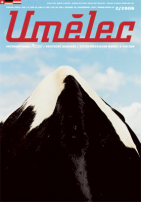



















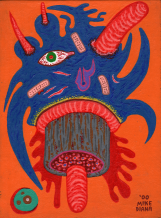
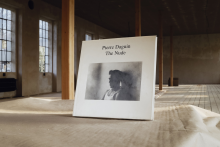
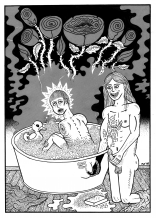
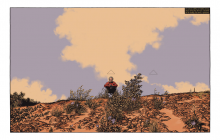


 New book by I.M.Jirous in English at our online bookshop.
New book by I.M.Jirous in English at our online bookshop.
Comments
There are currently no comments.Add new comment